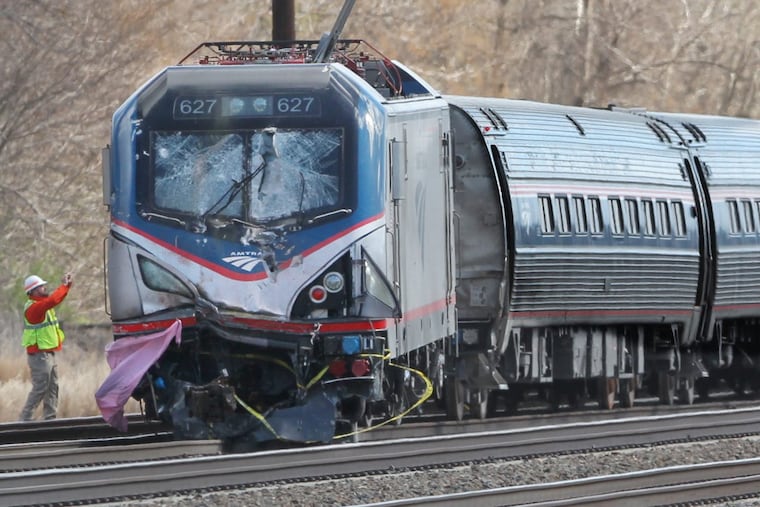Amtrak's CEO talks to Congress about safety issues raised by 2016 Chester crash
Amtrak's new CEO talks safety to Congress' rail subcommittee

Amtrak's safety culture was among the topics the rail carrier's new chief executive raised in comments to Congress Thursday.
It's no surprise. The National Transportation Safety Board described Amtrak's safety culture as woeful in its review of a 2016 train crash in Chester that killed two track workers.
So in his appearance before the congressional subcommittee responsible for railroads, Richard Anderson described the kind of safety culture he would like to create.
"A safety culture requires the reporting of safety issues at all levels," Anderson said. "It is intolerant of recklessness and the willful disregard for safety practices and learns from its mistakes."
While Anderson didn't mention the Chester crash directly, his comments are in some ways a direct reply to the NTSB's conclusions on that derailment. In it, they found more than 20 separate violations that contributed to the derailment. They noted a culture of fear permeated Amtrak, leaving workers unwilling to report errors due to worries about punishment. The NTSB found workers weren't given proper safety equipment – in this case devices that would have alerted dispatchers to the presence of personnel on an active track – and were negligent in following basic procedures.
On April 3, 2016, Train 89 to Savannah, Ga., hit a backhoe on the rails in Chester at about 100 mph. Two Amtrak workers on the tracks died and 39 passengers were hurt. Because of communications failures on the part of the night and the day foreman, protections that would have prevented a train from being routed onto a track undergoing maintenance were not in place. The train's engineer didn't know workers were in the area, and the workers had no idea a train was coming.
One of the foremen has been fired. The other is on leave.
In his comments Thursday, Anderson described plans for a safety management system that will identify problem areas before disasters occur, and maintains oversight to ensure solutions are working. Anderson described the "value of local knowledge," which suggests creating better channels for workers to voice concerns about safety issues. He also said the company would create centralized standards, training, and quality control for engineers and conductors, something which had been handled regionally.
"Our aim is a more robust, consistent, and unified approach to these issues," Anderson said.
The NTSB criticized Amtrak and labor unions for making safety protocols a subject of union negotiation. Amtrak has since said safety procedures are now mandatory and not subject to labor negotiation.
The rail company named a new Vice President and Chief Safety Officer, Ken Hylander, to manage Amtrak's safety program. It also is working to create more accountability for workers by installing inward facing cameras in all its locomotives. Such cameras are already in place on the Northeast Corridor.
One of the major issues that has come up about Amtrak service is the lack of an emergency braking system called Positive Train Control (PTC). That system would have prevented Philadelphia's fatal derailment in 2015, and it appears it would have also prevented a derailment in December 2017 near Tacoma, Wash. Anderson suggested he might cease Amtrak operations on tracks that do not have PTC in place, or well on the way to operation, by the end of the year. About 72 percent of the rail carrier's national network operates on rails not owned by Amtrak. He also noted one percent of Amtrak's routes, tracks in Maine, Indiana, New York, and Quebec, are on tracks that are not required by a federal mandate to have PTC installed. He said he was looking at options to make those routes safer, including abandoning them.
Anderson made no mention, though, of one of the NTSB's recommendations: that the company install locator devices on maintenance equipment so the PTC system in place on the Northeast Corridor can recognize when a vehicle is on the track. Such locator technology exists, and if it had been on the backhoe struck in Chester it might have prevented that derailment.
Amtrak has only said it would continue to evaluate that technology.
Anderson became Amtrak's chief executive at the end of 2017 after serving as executive chairman of Delta Air Lines' board of directors. Rail experts have said the airline industry is marked by an impressive safety record, and have hopes he can bring that culture to passenger rail. Amtrak carries more than 30 million Amtrak passengers a year on 300 daily trains. The CEO is selected by the company's 10 board of directors, nine of whom are appointed by the president.